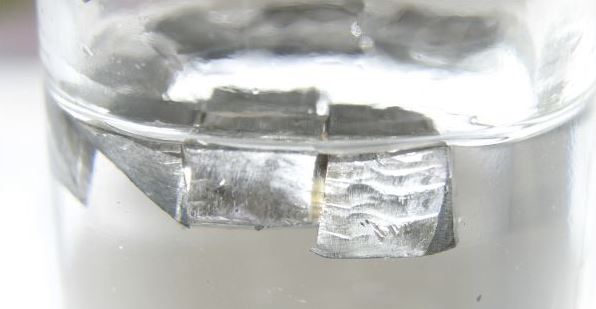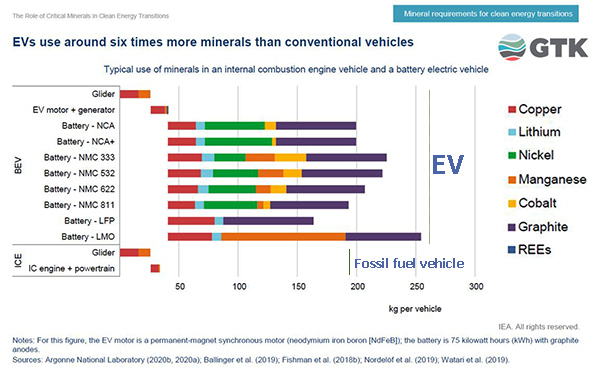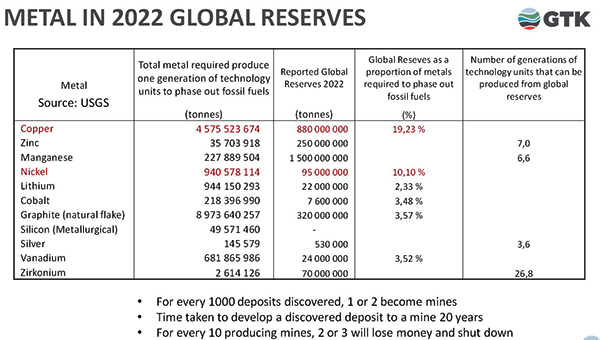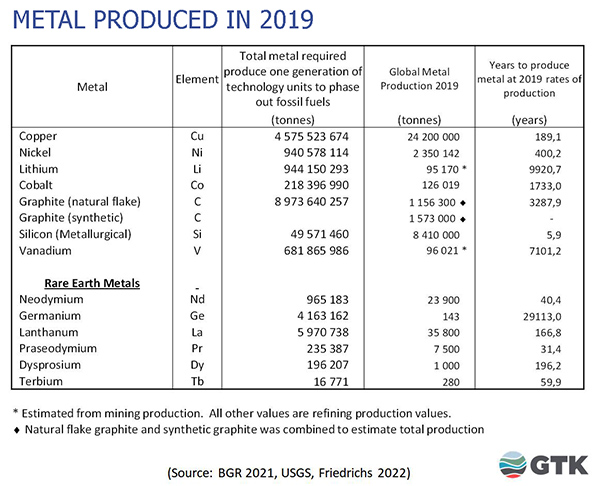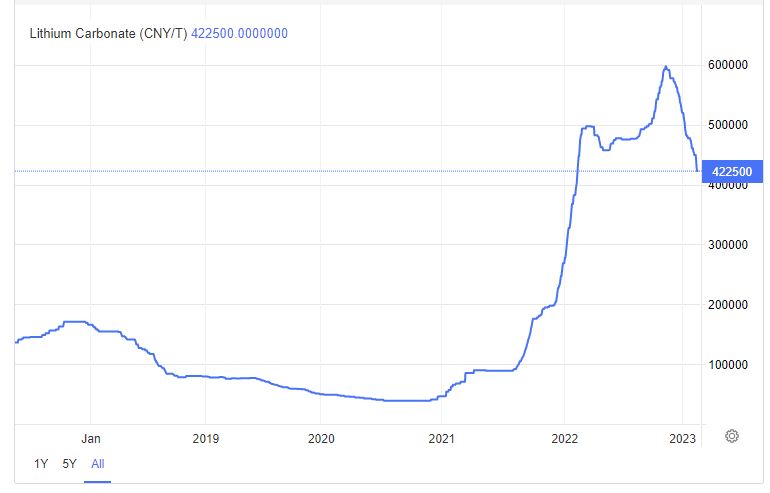So much for Net Zero by 2050
Simon P. Michaux calls it “Minerals Blindness” — the inability to see that there are just not enough metals to get to Net Zero.
He is an Australian working for the Geological Survey of Finland. He’s an Associate Professor of Mineral Processing and Geometallurgy, and has added up the tonnage required to convert the first generation of the fleet needed (theoretically) to get to Net Zero. So that’s just 25 years worth of wind turbines, solar panels and batteries.
And then we need to do it all again?
Michaux estimates that we need 944 million tons of lithium alone to go Net Zero (the first time). But at the moment every year we dig up about 100,000 tons a year, or 0.01% of what we need to reach the Net Zero target. Current total known reserves of lithium throughout the world in 2022 are just 26 million tons. Total known (best guess) resources are 98 million tons).* Obviously as the price of lithium rises, we will find a lot more. We haven’t been looking for lithium very long so we may even find ten times as much. But at our current rate of production it will take 10,000 years to dig up enough lithium — a figure that ought to light a barge of fireworks over the reality of the 2050 targets. Politicians and Green magic wish fairies may not realize what kind of galactic upscaling is required.
And of course, we need so much more than just lithium — there’s copper, nickel, cobalt, vanadium and germanium too. And we’ve been mining copper in a big way for a century and the deposits found now are deeper and lower grade than before. Copper discoveries have been declining for the last couple of decades but we’re hoping to dig up five times the entire known global reserve and speed up production from 190 years to just 30? (And remember, we’re using that current copper production for other things, which we still need as well.) Prices are set to go through the roof, and all the forecasts of “affordable” clean energy are just so much flying faerie lore.
Western society has taken one hundred fifty years of progress to achieve a fantastically complex energy system using the dense source of cheap hydrocarbon energy, the master resource. Yet the net zero devotees believe that the complex energy system can be dismantled with minimal disruption and replaced with a low-density renewable energy grid that is intermittent and non-scalable, in less than thirty years. — Robert Bishop
Consider the minerals required just for transport…
h/t to Notalotofpeopleknowthat
EV’s use six times more minerals than conventional vehicles
We are supposedly going to convert 1.5 billion vehicles to electric motors and batteries?
Known reserves of metals:
Click on the tables to enlarge them.
Production of metals in 2019
…
The price of lithium has risen by a factor of 8 since 2020. Total known global reserves have risen by 30% in the same period. Obviously we are just getting started in discovery and production increases. But all those estimates of car battery costs in 2035 need to forecast the price of lithium, which involves guessing how much we’ll find and how much it will cost, and how many crazy nations will force their unwilling citizens to buy a car they don’t want in an era where electricity prices are on fire.
How high will the fever pitch prices go, or will reality bomb the market as EV sales decline, the economy crumbles, and it dawns on everyone that no amount of mandates will blink cars into existence or produce megatons of minerals?
*Reserves are rocks in the ground that we are sure (in a legal sense) we can mine economically. Resources are the rocks we think are there, but they’re either not economic to dig up, or not worth drilling enough holes to know for sure just at the moment.
A PowerPoint summary of his thousand-page study can be downloaded here. Delivered as a seminar last year in Queensland:
Lithium image by Tomihahndorf at Wikipedia
